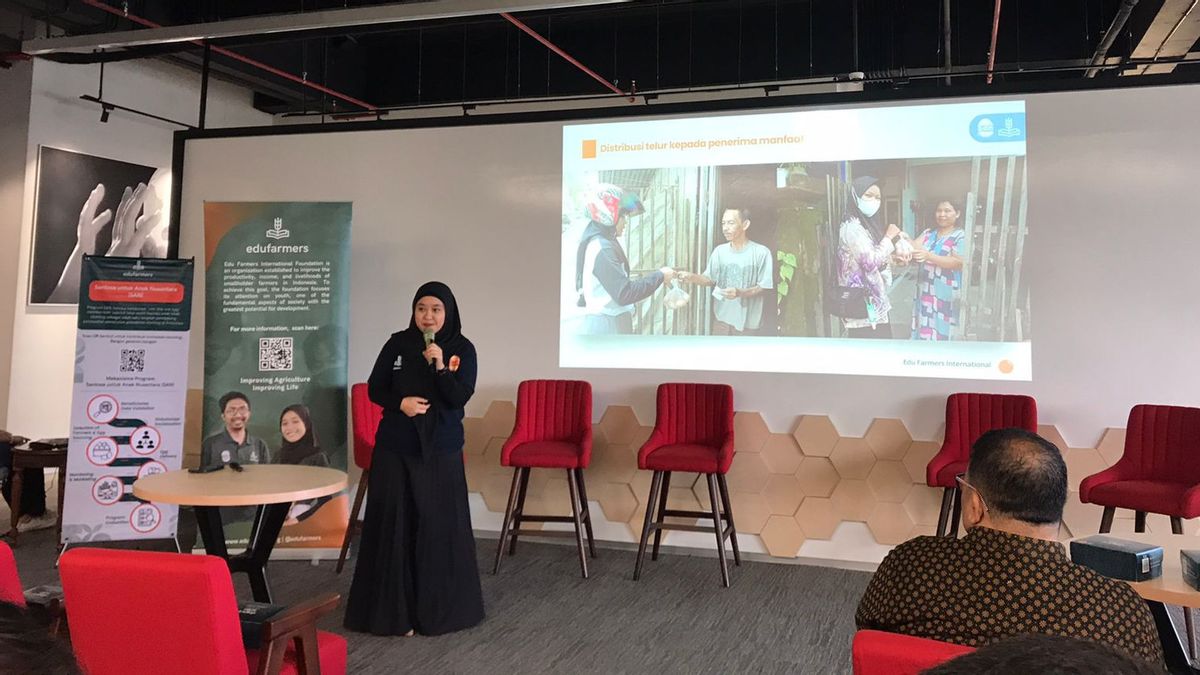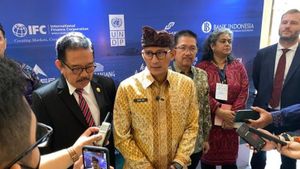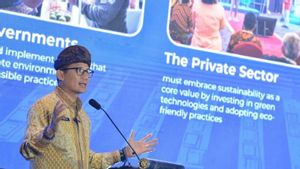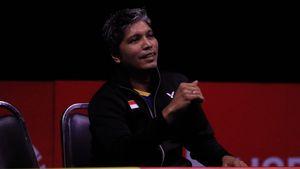JAKARTA - The government continues to intensify the intervention to reduce the prevalence of stunting in Indonesia. This is in order to achieve the target of stunting rates which will decrease to 14 percent by 2024.
As an effort to reduce stunting rates, the One Day One Egg movement appears in the sense of providing one egg consumption in one day to children.
The One Day One Egg campaign was initiated by the Edu Farmers Foundation in the Santosa program for Indonesian Children. Head of Stunting Prevention Program Edu Farmers, Meigie Silviana explained, the One Day One Egg movement
In this program, Meigie said the reason her party intervened using eggs was because the eggs had various benefits for child development and were considered effective in dealing with stunting.
"We refer to a journal, a Washington University study, where the study states that giving one egg to a child for six consecutive months has the potential to reduce the stunting rate by 47 percent," Meigie said in a discussion at the Tanoto Foundation office, Central Jakarta, Wednesday, July 26.
Megie explained, the One Day One Egg movement has a number of advantages in reducing stunting rates. Among them, eggs are animal protein at affordable prices.
Then, the availability of eggs in Indonesia is quite a lot. No less important, eggs have complete essential protein and amino acids for child growth.
"From the storage, we know that in villages and underprivileged communities there are still many who do not have a refrigerator. So, this egg can still be stored at room temperature for 1-2 weeks. So, it won't be a hassle," he explained.
In its implementation, this campaign was held for six months in 3 regions, namely Cirebon City, Malang Regency, and Maros Regency. Edu Farming carried out a mapping of farmers who were active in the stunting reduction intervention area which was carried out.
Then, Edu Farmers also first conducted socialization to village officials, health centers, and also posyandu. "We also validate and verify the status of children so that they are more targeted. children with underweight status and stunting will get this program," he said.
Since the program began, Meigie revealed that her party has collaborated with posyandu cadres to distribute 7 grains of eggs to beneficiaries each week for 6 months. During the program, Edu Farmers conducts daily monitoring and monthly monitoring.
"In daily monitoring, parents or beneficiaries send photos of children eating eggs every day. So that they don't just change behavior to get used to giving egg consumption to children, but also ensure that these eggs can really be eaten by the child. Then, every month, we and posyandu cadres monitor children's growth," explained Meigie.
From the government side, Deputy for Human Development Policy Support and Equitable Development of the Vice Presidential Secretariat, Suprayoga Hadi, explained that there are two intervention mechanisms for reducing stunting rates, namely specific interventions and sensitive interventions.
Specific interventions are interventions aimed at children in the first 1000 days of life, ranging from feeding to pregnant women to complete immunization of children.
اقرأ أيضا:
Meanwhile, sensitive interventions are carried out through various development activities outside the health sector, such as providing access to clean water and sanitation, to education on sexual health and reproduction and nutrition in adolescents.
"Since 2018, the Vice President has initiated a national strategy to prevent stunting. Now, with Presidential Decree No. 72 of 2021, the name has accelerated stunting reduction. We are more focused on reducing the prevalence rate that we are really trying to achieve. We see two contexts, specific intervention and sensitivity intervention. So, both must be handled specifically," said Suprayoga.
Then, there are 5 pillars carried out by the government. Among them are commitments and actions that are manifested by signing the commitment of all local governments to carry out a program to accelerate the reduction in stunting rates.
The second pillar is a matter of community behavior. According to Suprayoga, this needs to be handled specifically. "Changes in this behavior take time. We can't just call it turning our hands, in this case it takes time. What we have to see is that stunting must be specific, character and culture are considered," he said.
The third pillar is the role of the government in conducting convergence of various programs. The fourth pillar is the provision of nutrition to children. The fifth pillar is monitoring and evaluation.
"So why is the stunting rate high, starting from reality in the field, characteristics in the field, and its connection with changing behavior that really takes time and we have to be patient to be able to control all of this," he added.
The English, Chinese, Japanese, Arabic, and French versions are automatically generated by the AI. So there may still be inaccuracies in translating, please always see Indonesian as our main language. (system supported by DigitalSiber.id)

















